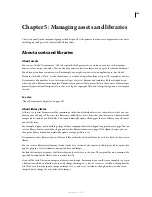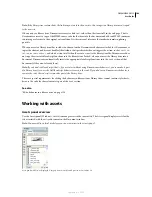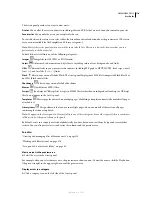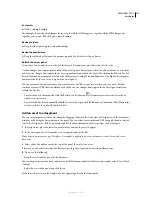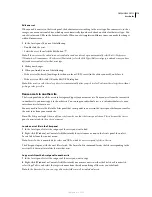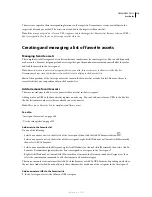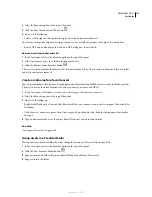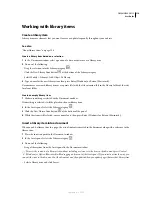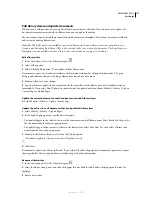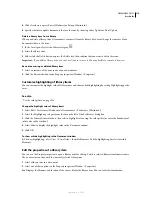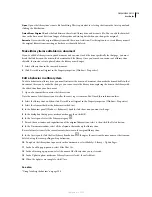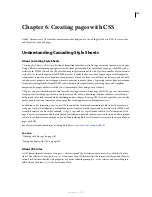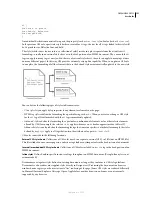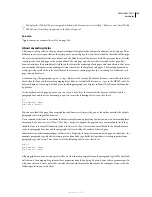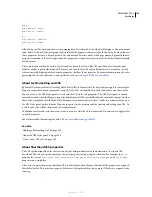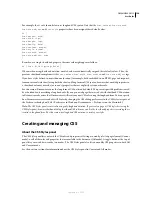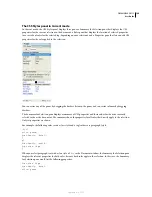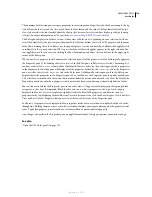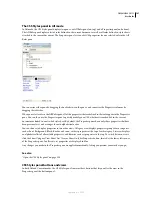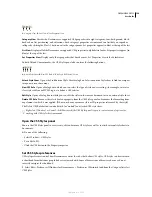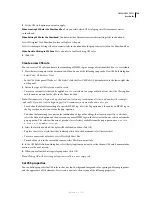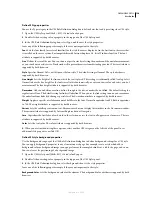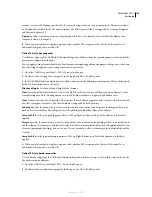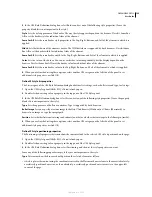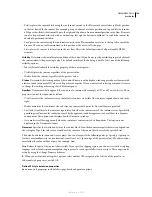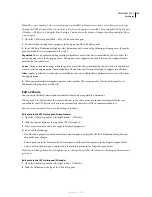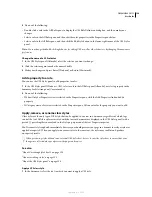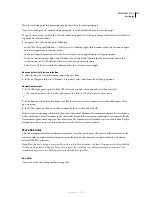
DREAMWEAVER CS3
User Guide
122
To display the O’Reilly CSS reference guide included with Dreamweaver, select Help > Reference and select O’Reilly
CSS Reference from the pop-up menu in the Reference panel.
See also
“Apply, remove, or rename class styles” on page 136
About cascading styles
The term
cascading
refers to the way a browser ultimately displays styles for specific elements on a web page. Three
different sources are responsible for the styles you see on a web page: the style sheet created by the author of the page,
the user’s customized style selections (if any), and the default styles of the browser itself. The previous topics describe
creating styles for a web page as the author of both the web page and the style sheet attached to that page. But
browsers also have their own default style sheets that dictate the rendering of web pages, and in addition to that, users
can customize their browsers by making selections that adjust the display of web pages. The final appearance of a
web page is the result of the rules of all three of these sources coming together (or “cascading”) to render the web
page in an optimal way.
A common tag—the paragraph tag, or
<p>
tag—illustrates the concept. By default, browsers come with style sheets
that define the font and font size for paragraph text (that is, text that falls between
<p>
tags in the HTML code). In
Internet Explorer, for example, all body text, including paragraph text, displays in Times New Roman, Medium font
by default.
As the author of a web page, however, you can create a style sheet that overrides the browser’s default style for
paragraph font and font size. For example, you can create the following rule in your style sheet:
p {
font-family: Arial;
font-size: small;
}
When a user loads the page, the paragraph font and font size settings set by you as the author override the default
paragraph text settings of the browser.
Users can make selections to customize the browser display in an optimal way for their own use. In Internet Explorer,
for example, the user can select View > Text Size > Largest to expand the page font to a more readable size if they
think the font is too small. Ultimately (at least in this case), the user’s selection overrides both the default browser
styles for paragraph font size and the paragraph styles created by the author of the web page.
Inheritance is another important part of the cascade. Properties for most elements on a web page are inherited—for
example, paragraph tags inherit certain properties from body tags, bullet list tags inherit certain properties from
paragraph tags, and so on. Thus, if you create the following rule in your style sheet:
body {
font-family: Arial;
font-style: italic;
}
All paragraph text on your web page (as well as text that inherits properties from the paragraph tag) will be Arial and
italic because the paragraph tag inherits these properties from the body tag. You can, however, become more specific
with your rules, and create styles that override the standard formula for inheritence. For example, if you create the
following rules in your style sheet:
September 4, 2007

